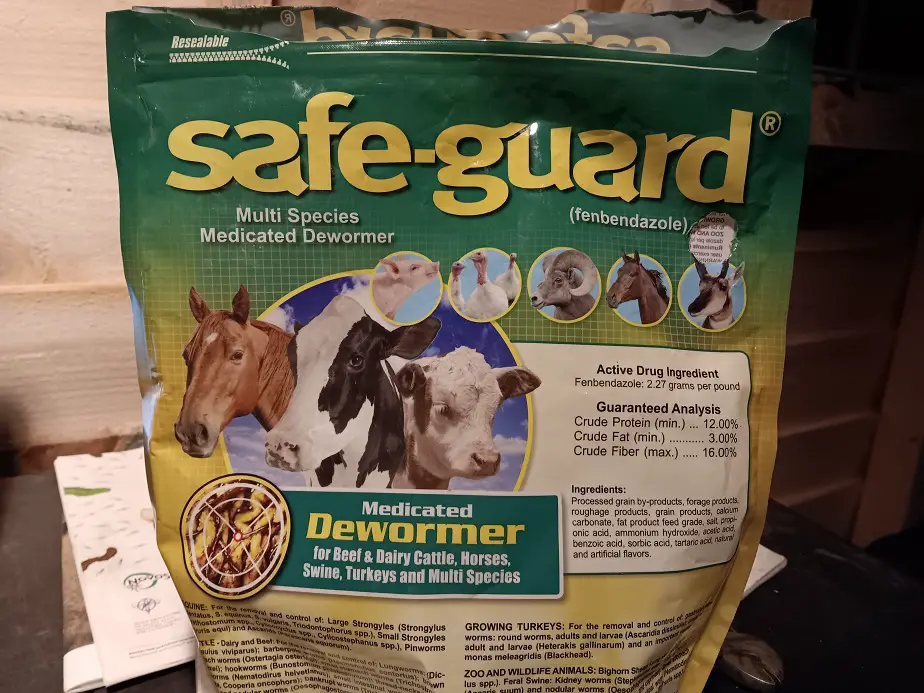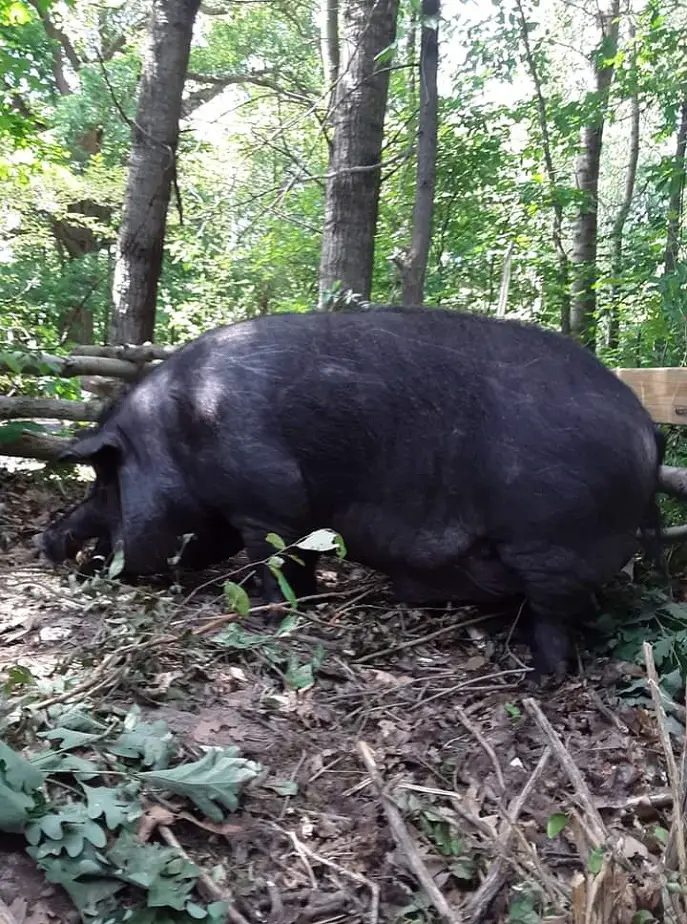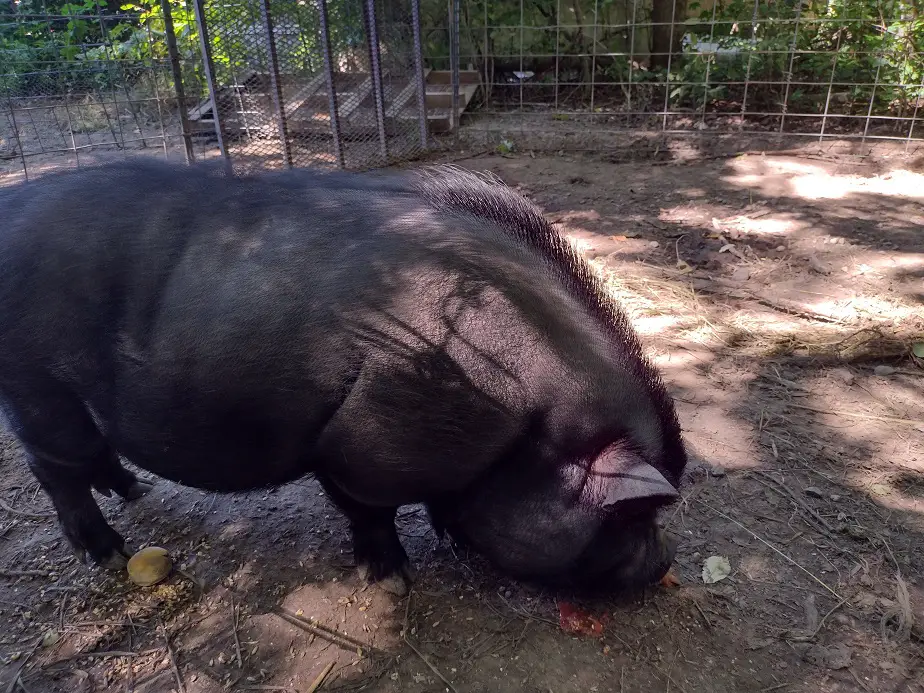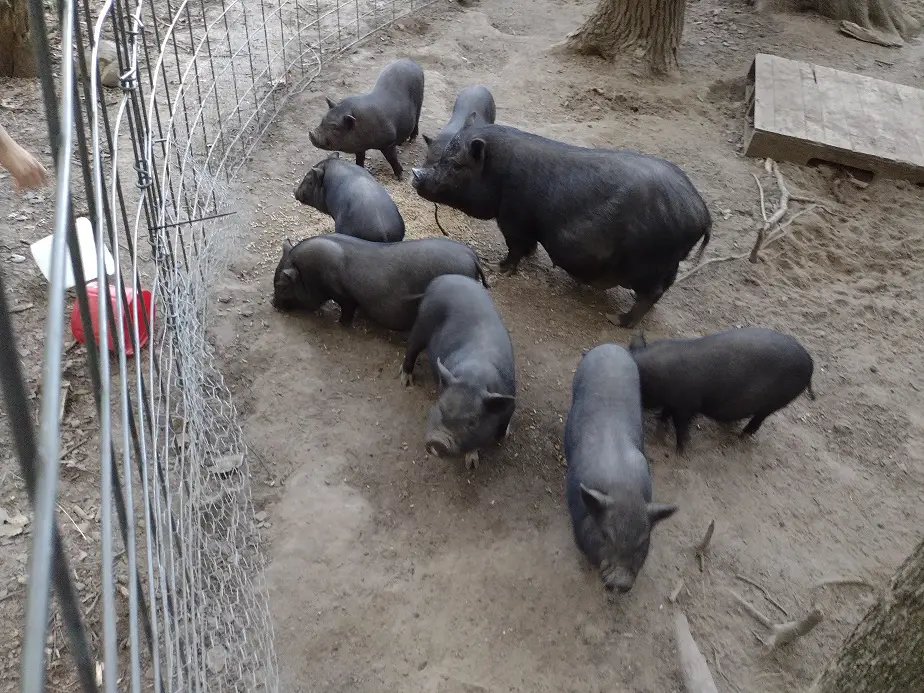As a more holistic farmer, folks ask me if we castrate our piglets. Here’s my answer.
Piglets don’t need to be castrated. For many farmers, castration of young boars (before 8 weeks) is the simplest method of avoiding strong flavor due to male hormones. Other methods are to split genders and raise only males or females together, or to butcher the males 2 months later than the females.
This is a heated discussion among pig farmers. I don’t castrate at all and here are the results.
Why are Pigs Castrated?
Male piglets are castrated as a way to control hormones, which affect the taste of meat in people sensitive to them. They also affect the behavior of the animal. As the young boar enters puberty, the testicles produce Andosterone and cause an increase in Skatole, which causes undesirable traits.
Andosterone is a male sexual hormone and pheromone in most mammals. It has a similar action to testosterone but at a lower level. Its primary negative trait in pigs is the smell and thus flavor (mostly coming from the olfactory sense). It’s a strong musk described as a sweaty urine smell.
It’s stored in fatty tissues and is temperature effective, meaning cooking the pork will make the smell much stronger. In nature, boars have a lot of andosterone. It helps them breed and find mates. It also causes them to be more competitive and seek to establish male dominance in the pack.
Skatole is another affected pheromone in pigs. The word literally means poop in the Greek. It’s a stout-smelling pheromone that’s produced in the colon. It’s also found in the saliva. When a boar is neat a sow in heat, he will often salivate excessively, putting out more pheromones.
The production of both androsterone and skatole is controlled by the testicles. Both are stored in the fatty tissue, and both smell and taste bad if you are sensitive to it. About half of the people find it repulsive and the other half can’t tell or simply don’t mind.

One thing you need for pigs, no matter your raising system, is a parasitic worm treatment. The best swine dewormer is Fenbendazole. It’s known by the brand name Safeguard. Safeguard is available as a medicated corn/alfalfa pellet. It’s the only way I can worm my pigs since they won’t stand still for an injection of Ivermectin. It’s easy and cheap.
- There is a stronger pellet for swine only. Here it is on Amazon
- There is a weaker pellet for general barnyard livestock, including swine. Here it is on Amazon.
I use the multi-species version because it’s what’s available in my local store and I can use it for my chickens too. It’s the most effective swine wormer and the easiest to administer. I use it on all weaned piglets and adults twice a year. Don’t go without it.

Are Uncastrated Boars Aggressive?
Castration is able to mellow the behavior of boars, lessening the frequency of fights and other aggressive, dominant behaviors. Similar to getting dogs neutered, it usually helps a little with undesirable behaviors. Although, it will not completely prevent aggressive and territorial behaviors.
Sometimes you get a problem boar, one that’s just aggressive and rough. That is when you will likely see a bigger behavioral impact. Castration has on;y a small impact on behavior most of the time. Often, you won’t see a behavioral difference between castrated and uncastrated boars.
When raised in a proper, stress-free environment, I wouldn’t expect a serious behavior problem with an uncastrated boar. But, sometimes there are problems animals. I haven’t dealt with that personally but if I was working with larger numbers, It may come up.
The Process of Castration
Castration in pigs is a surgical process usually handled by the farmer or farmhands. Before 8 weeks, the piglets are held down and the scrotum cut. The testicles are pulled out and generally ripped off instead of cut because there is less bleeding and faster healing from the tear than a cut.
Healing is very quick in young boars, usually completely healing in a few days. Castrating mature boars is a problem and should only be done when the animal has been tranquilized and usually requires stitches to heal properly.
General castration of young boars is a crude but functional process done without any pain treatment to the animal and no stitches afterward. It’s a process that’s manageable without a veterinarian. But, mature boars should have intervention by a vet.

Alternatives to Castration
Boar separation and butchering boars before puberty are alternatives to castration. Raising boars and sows on different plots of land is the most common alternative today. Boars butchered younger than 3 months and boars raised without females should not need castration.
For small farmers, a great option is to sell boars as feeder pigs to folks who want to raise a pig out to butcher. I would be frank about it and tell people that it’s fine as long as there are no females. The presence of females is what gets the sexual hormones flowing. Without that, it’s not a problem.
Intact boars can be sold as roasters if you can’t keep them separate from the females. For my pigs, I would be willing to sell as roasters at 8 weeks old, which is when they’re weaned. About a month later, they’re starting to show signs of sexual interest from puberty.
If I had a friend who wanted to raise a herd of pigs, We could perhaps split my feeders up that way. One of us raises males and one raises females. That would work.
What I have done, which is less accepted and considered riskier, is butcher the females first, then the boars 45 days later. I raise them in separate pent to prevent breeding, but right next to each other. The sows are butchered at 6 months and the boars at 7-1/2 months.
I came up with that after reading about studies done on a 30-day separation period reducing boar taint. 30-days seemed to be a minimum, so I gave it an extra half-month for good measure.
One technique I could add is to keep boars thinner until the females are gone, then let them fatten up. This one is disputed as to whether it works or not. The idea comes from the fact that the problem compounds are created when females are around and stored in the boar’s fat.
It may be that keeping them lean when the females are present and fattening them up after they are gone would limit the body’s ability to store androsterone and skatole, resulting in lower instances of off-tasting pork. I’m not convinced about it yet.
So there you have it, why most farmers castrate pigs and why I don’t need to.
Related Articles:

